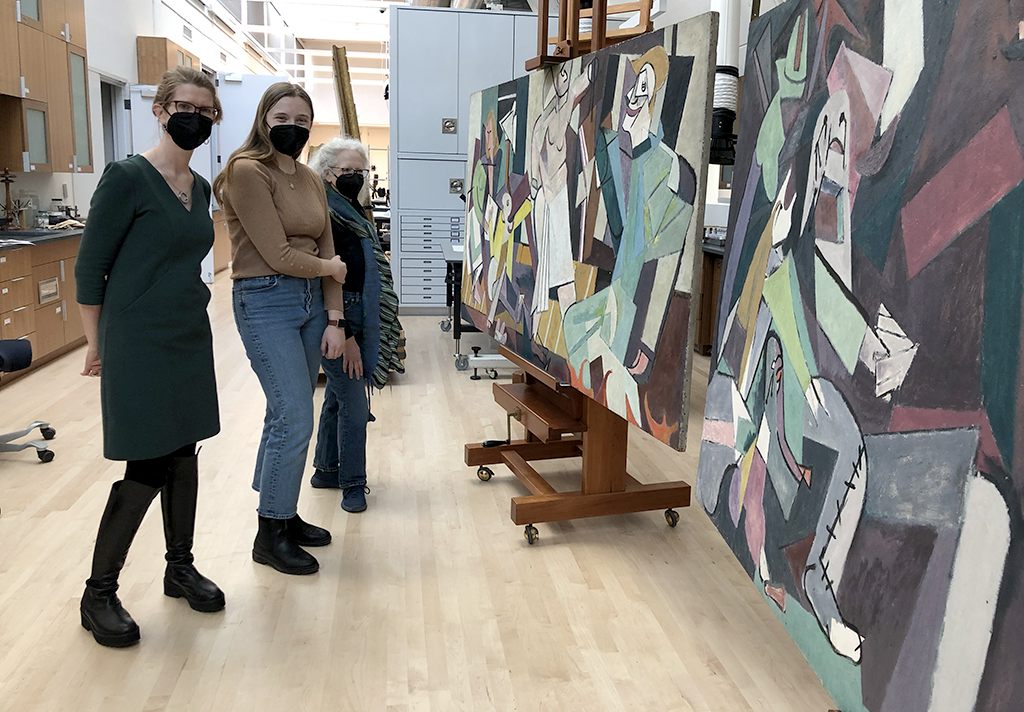Peyton Dauley ’24 to present research on little-known painting at art history symposium

While searching for a paper topic in Professor Kristina Wilson’s Art and the Experience of Modernity, 1880–1940 course last spring, Peyton Dauley ’24 stumbled across a work by Cape Cod artist Karl Knaths. In “Day of Atonement,” Knaths uses cubism to protest war, fascism, and the perils of artistic suppression; the painting drew Dauley in and provided her the perfect canvas on which to explore those ideas further.
“Cubism, specifically in reference to anti-war protest, had always been intriguing to me,” she says. “In this class, we focused a lot on how artists used this medium to express their thoughts, and it was always just really inspiring to me how they could do so within such objective shapes and lines.”
Dauley chose to shine a light on the little-known 1939 work not only because of its radical nature, but because Knaths lived in Hyannis, Massachusetts — not far from her own hometown of Mashpee. She adds that the opportunity to choose and research her own subject, and to interpret it in her own way, was empowering.
Wilson encouraged Dauley to submit her paper to the 14th Annual Undergraduate Art History Symposium, co-sponsored by the Visual Culture Consortium and the Museum of Fine Arts, Boston (MFA). Her paper was accepted, and she will present her research, “American Guernica: Karl Knaths’ Defiant Cubism in the Face of a New National Identity, and the Subsequent Suppression of Avant-Garde Art,” at the virtual symposium this Saturday, April 9.
“Day of Atonement” is part of the Americas collection at the MFA, and Dauley and Wilson recently were invited to view the piece in the museum’s Painting Conservation Lab, where it was being prepared for a major reinstallation of the Art of the Americas galleries.
Dauley says she was “blown away” by the size of the painting (48-by-96 inches) as well as by the physical effort it would have taken to create it. “Being face-to-face with a painting like that — seeing where he made corrections, where he forgot to paint, and even the hairs from his paintbrush — was inspiring.” Looking at the painting on a computer screen didn’t let her see just how much of a passion project it was for Knaths.
At the MFA, Dauley also was able to witness two other paintings being cleaned and restored. She is grateful to Erica Hirshler, MFA’s senior curator of American paintings, for the opportunity to go behind the scenes at one of the world’s greatest art museums.
After graduating from Clark, Dauley hopes to pursue a career in public history or museum studies. Though she is a history major, writing about “Day of Atonement” helped her discover a passion for art and research that she didn’t even know she had, she says, and she plans to use the rest of her time at Clark to develop these interests.


